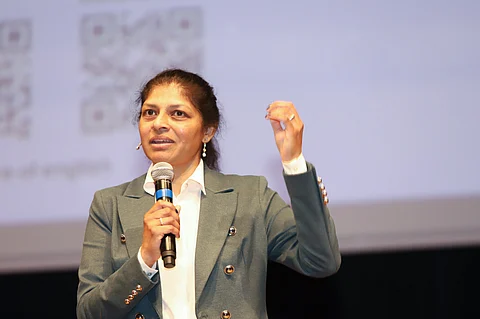

New-age tools such as AI may have created a window for a paradigm shift in language learning and assessment, but we should tread cautiously. The linguistic landscape of the South Asian subcontinent is unmatched. There are more than 2,000 distinct languages and dialects spoken in the region with India alone boasting around 780 languages, 22 of them official. Even as English continues to play the role of lingua franca, the influence of some of these languages — such as Hindi, Bengali, and Urdu — is on the rise globally.
The sixteenth century maxim that ‘knowledge is power’ probably carries more weight today than ever. Especially in the context of language proficiency which is unquestionably a critical metric for success. In the last few decades, populations have become increasingly mobile for work, education and migration.
According to the latest UN estimates, 281 million people are living in a country other than their countries of birth. The number of internationally mobile students globally has nearly tripled in the last 20 years, rising to over six million in 2021.
In such a dynamic global ecosystem, being proficient in English the most spoken language in the world with an estimated two billion people learning it, is important but not at the expense of local languages.. Precisely why South Asian countries are laying emphasis on multilingual education.
India, for instance, in its National Education Policy (NEP), is encouraging mother-tongue-based multilingual education in early learning while promoting linguistic diversity throughout the curriculum. There are obvious merits.
Research has found that children studying through their first language in early years find it easier to learn additional languages and subjects later on.
While this focus on multilingualism presents opportunities, it also presents a fair number of challenges. Chief amongst them is the need for standardisation to aid seamless communication. Also, to find an assessment method that is valid as well as reliable from a cultural-lingual standpoint, is nothing short of a herculean task.
It demands due diligence to arrive at a technique that is strategic, dynamic, multimodal, fair, and also inclusive.
This is where technology is proving to be of seminal help pedagogically. It offers a complete ecosystem for automating language assessments. AI-led innovations are using algorithms and deploying analytics for adaptive testing, boosting engagement, serving diverse learning needs, being strategically interactive, giving timely personalised feedback, pacing itself according to an individual’s competence levels, and also tracking performance at a micro level.
That too objectively by largely ruling out chances of any prejudices interfering the assessment process. It also has the ability to handle large volumes and data efficiently.
Online remote proctoring and Natural Language Processing (NLP) for Automated Essay Scoring (AES) are just a few examples strengthening the decree. Tech-based tools, unlike traditional modes that are intrusive and limited, can also be designed for stealth assessment.
Technology also helps in enhancing the overall learning outcomes, especially in languages. Qualitative speech components, like pronunciation and intonation, and regular practice sessions are very important when it comes to language learning and assessment.
The traditional brick-and-mortar, or what can here be referred to as paper-and-pencil models, do not score better than tech-based models in terms of reach and scalability. And as seen during the Covid pandemic, tech solutions are also more resilient and sustainable, as they can counter disruption and help maintain continuity.
However, the true potential of tech-based learning and assessment solutions can only be harnessed by ensuring accessibility for one and all. Digital literacy remains an area of gross concern here. Even though South Asia is credited with the maximum number of online users amongst regions, a huge digital gender gap exists. The basic tenet of equal opportunities cannot be fulfilled till the time this gender gap is addressed.
Another key challenge pertains to ethical issues in AI-driven assessments. After all, if the algorithms that are fed in the system carry variables that are already colored with conscious or subconscious bias, the results will be anything but fair. The risk only amplifies further when the assessment model has to factor in several metrics in the multilingual and cultural realm.
Such flaws apart, AI-driven assessments tend to be vulnerable to data breach, thus putting sensitive private academic information at stake. These challenges need to be navigated through.
Any tool that is developed needs to be tested in diverse cultural and multilingual settings. The educators must be empowered and trained to stay abreast with latest advancements so that the assessment tools can be tweaked in real time for continued effectiveness.
A collaborative approach between all stakeholders in the ecosystem of language learning and assessment can show the way forward. Given the cultural and linguistic diversity in the South Asian subcontinent, on one hand, it may augur well to adapt a framework such as Common European Framework of Reference for Languages (CEFR) regionally.
On the other hand, bespoke assessment tools can be developed to cater to unique needs. For instance, the British Council has been partnering with the leading technology companies to offer assessment solutions that are secure and value centric.
There is no denying that digitisation is here to stay. However, the need of the hour is to leverage technological innovations in a way that they can seamlessly align with foundational pedagogical theories and methodologies.
(The writer Mina Patel is Head of Research, Future of English, British Council)
